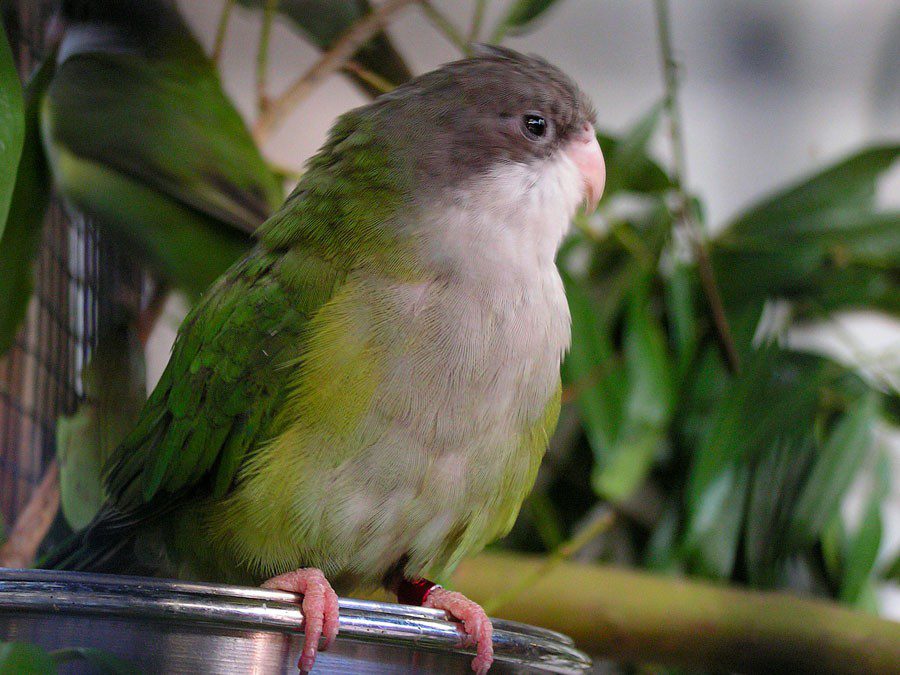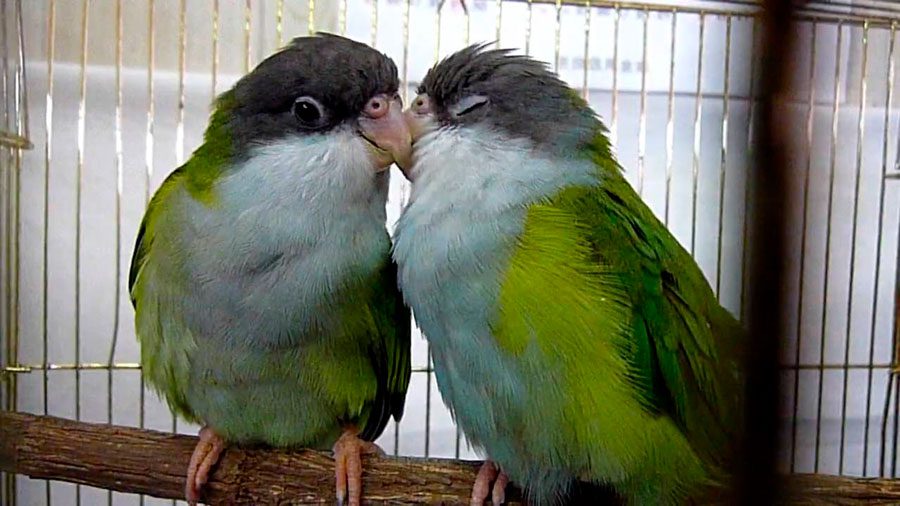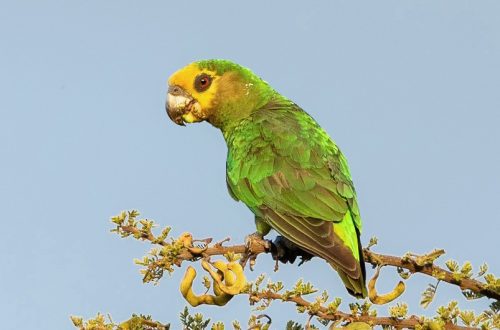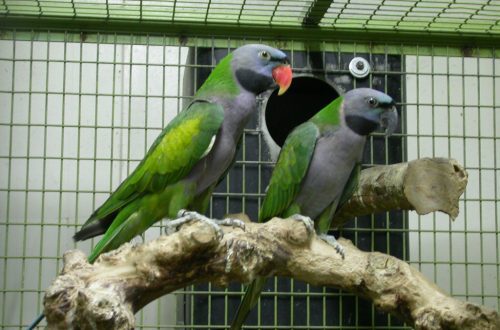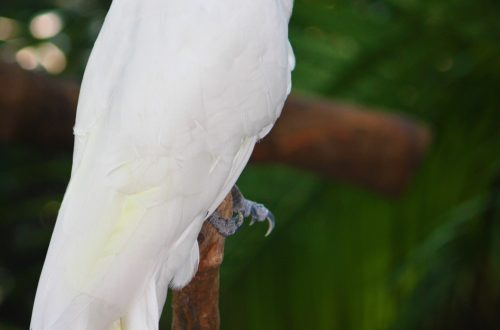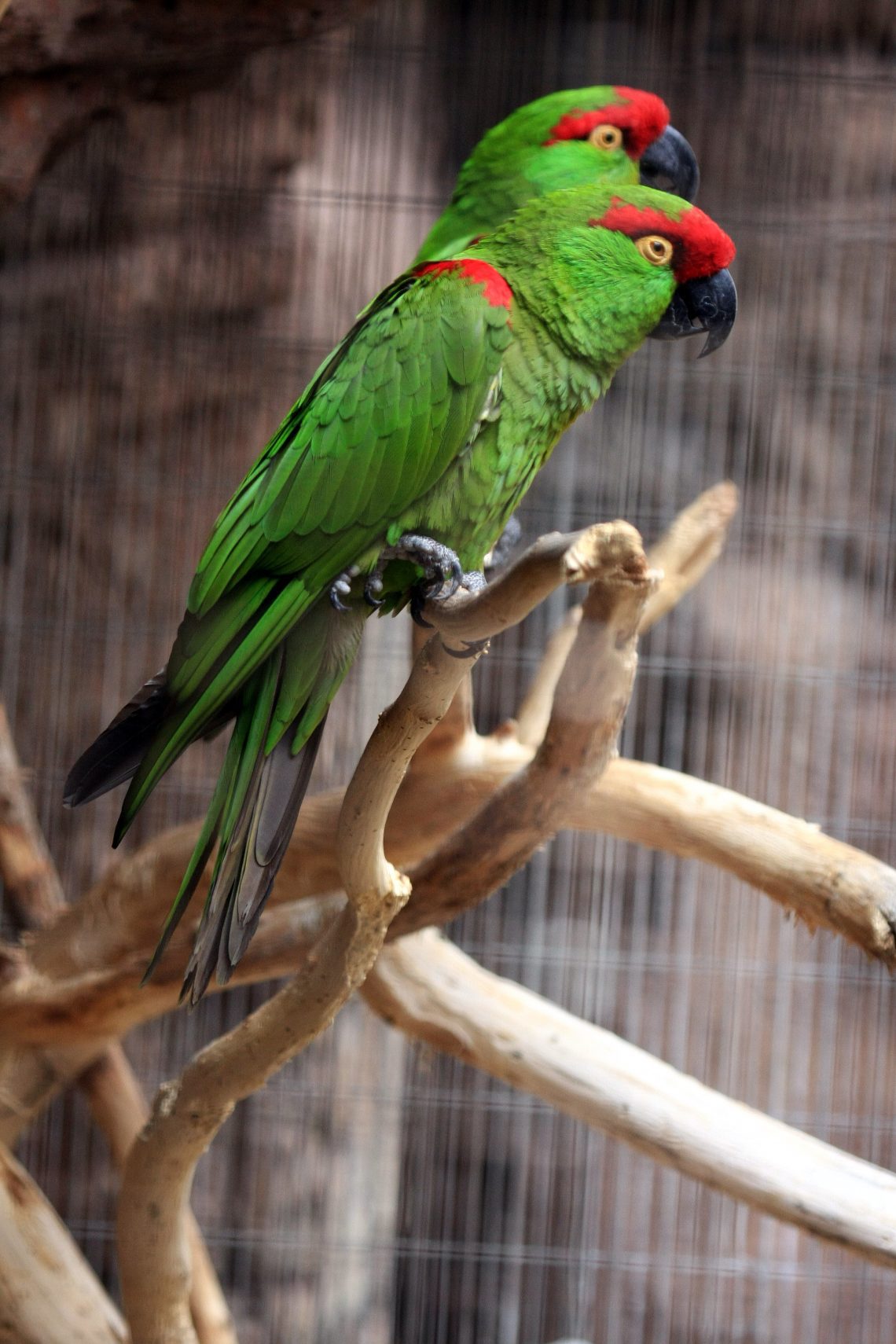
Brown-capped thick-billed parrot
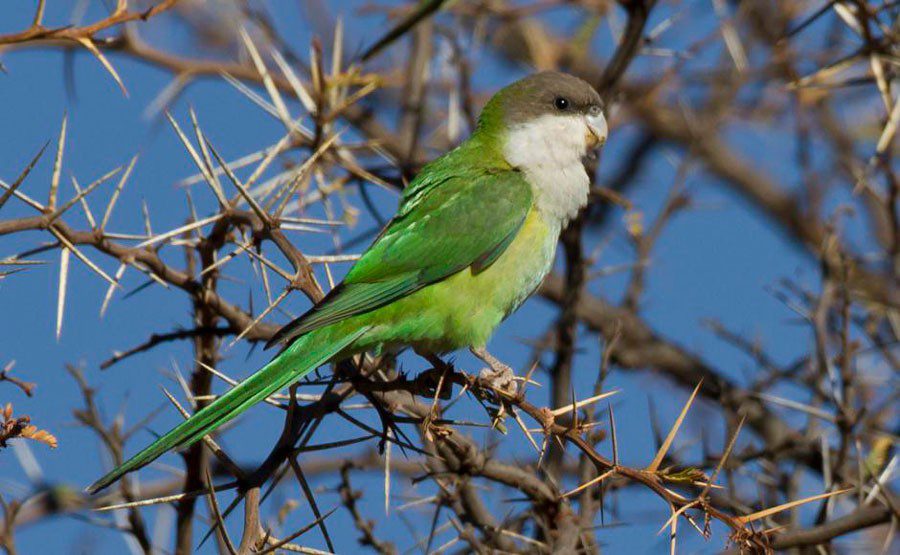
| Brown-capped thick-billed parrot | Aymara Psilopsiagon |
| Order | Parrots |
| family | Parrots |
| Race | mountain parrots |
Contents
Appearance of a brown-capped thick-billed parrot
Small parakeets with a body length of 20 cm and a weight of up to 45 g. Both sexes are colored the same. The main color of the body is green, the head is brown-brown, the chest is gray. Males are usually larger than females, their coloration may be brighter. The eyes are brown, the legs are pink-gray, the beak is gray-pink.
Life expectancy up to 9 – 10 years with proper maintenance.
Habitat and life in nature
The population is quite large and stable.
The habitat of these parrots covers central Bolivia to northwestern Argentina, perhaps these birds also live in northern Chile. They prefer the mountainous regions of the Andes at an altitude of 1800 – 3000 m above sea level. They inhabit shrubs and forests in arid areas around small villages and farmlands.
Usually they live in flocks of up to 20 birds, stay near water, around agricultural landscapes, flying from bushes and trees in a wave-like flight. The chirping is reminiscent of that of barn swallows.
They feed on low shrubs. The diet includes seeds of wild and cultivated cereals, berries and fruits. They also do not disdain fallen fruits, picking them up from the ground.
The nesting period begins in November. For nests, birds dig holes along the banks of rivers; they can also use various cracks and holes for this; they can nest in cacti and old buildings. Sometimes they gather for this in small colonies. The clutch usually contains 4-5 eggs, sometimes up to 10. Incubation lasts 28-30 days. The chicks leave the nest at 6-7 weeks old.
Maintenance and care at home
Unfortunately, these birds are not often found on sale, however, if you choose them as pets, you will not go wrong. They are very special. Something between a parrot and a songbird.
The species is classified as moderately noisy. And, despite their small size, the birds are quite smart and lively.
It is better to keep a heterosexual pair or several females, since, with a small cage volume, birds can be aggressive towards their relatives. They can also chase larger birds, although they themselves do not show very strong aggression. The couple very carefully and gently cares for each other, gently chirping.
Western breeders in captive keeping settle brown-capped parrots along with other small species – wavy, pink-bellied. Their sociality and sociability are also considered a positive point, they are quite well tamed even in a pair. They can eat food from their paws. Several color mutations of these birds have been bred, including the lutino (yellow).
These birds do not have the ability to imitate speech.
For keeping at home, a long, spacious rectangular cage with a minimum length of 70 cm is suitable. If it is a spacious aviary, even better. Place the cage in a bright room away from drafts and heaters. The cage should have perches, feeders, drinking bowls. You can put toys, ropes in the bird’s dwelling, pets will appreciate it. You can fill the bottom with filler or lay paper.
Offer your birds a bathing suit filled with room temperature water. You can build a stand for the birds to spend time outside the cage. They love to fly, they need movement.
Feeding the brown-capped thick-billed parrot
For brown-capped parrots, an industrial grain mix for small parrots is suitable, also offer spikelets of Senegalese millet, their beaks are capable of snapping safflower, hemp and sunflower seeds. Tree branches with bark will also be a nice treat. Birch, willow, linden, fruit trees are suitable for this. Pre-scald the branches with boiling water so as not to bring infection or parasites into the house. In addition to these foods, include fruits, vegetables, herbs, berries and sprouted grains in your diet. Feed of animal origin should only be given during the breeding season.
Breeding a brown-capped thick-billed parrot
For breeding, a spacious cage and house with a minimum size of 17.8 cm x 17.8 cm x 30.5 cm is suitable.
Before hanging the bird house, it is necessary to prepare for breeding 2 weeks in advance. Gradually, it is necessary to increase daylight hours to 14 hours with the help of artificial lighting.
In addition to the usual feed, it is necessary to introduce protein-rich feed (egg mixture) and germinated grain into the diet, this will help the birds to “awaken” their reproductive system. The cage should also have sources of calcium and minerals – a mineral mixture, sepia and chalk.
When the birds begin to mate, we hang the prepared house with sawdust. You can offer the birds thin twigs to build a nest. After laying the first egg, we remove the protein feed from the diet and introduce it again when the first chick appears. The female incubates the clutch, the male feeds her all this time.
Chicks are born after 28 – 30 days of incubation helpless and naked. After their plumage, they leave the nest, and their parents feed them for some time.



